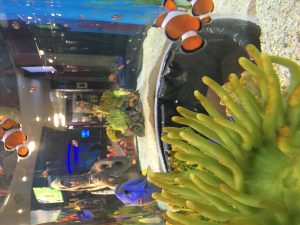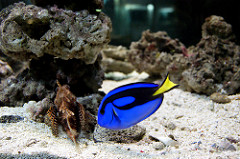This summer, there was another Pixar cartoon movie “Finding Dory” became really popular. The story is interesting; the animals are cute. But the movie itself actually have negative impact to the nature. And you may ask why?
Here are some stories, after the last ocean movie “finding nemo” in 2003, what people didn’t expect is an 40% increase of the nemo fish in the pet fish market and aquarium trade. Nemo fish is actually belong to the clownfish family. And every year, over 1 million of them was taken from the ocean. That happened in 2003, after the movie became successful. Now, marine biologists Rene Umberger and Craig Downs worried about that this will happen again, to royal blue tang fish- the dory. Actually, the data showed that the royal blue tang has been ranked as high as 10th among all 2,300 saltwater aquarium fish species imported to US. And in 2009, the number was 130,000, before the movie. Also, according to Umberger and Downs, about 50 percent of wild-caught aquarium fish were detected with different levels of cyanide. And cyanide will not only the “Sudden Death Syndrome,” which is spontaneous death of the fish. It can kill nearby non-target fish, invertebrates and coral reefs as well. Also, they help to keep the reef healthy, as they eat nothing but algae, therefore they prevents the algae from overgrowing and suffocating the coral. Here is an interesting fact the flesh of dory is poisoning. Although it would not be able to kill you, I doubt anyone would eat them.

DORY AND NEMO
There are some scientists actually start a program called “ Saving Nemo Conservation Fund” after 2003.And, they are trying an alternative to collecting wild clownfish from the ocean. Nursery breeding is an easy way to prevent over collection of clownfish in the wild. And for the 7 out of 28 species of clownfish are bred in Australia. Unfortunately, none of the ten host anemone species are bred in captivity for aquariums. But, it is lucky for dory, as the University of Florida Tropical Aquaculture Lab announced that blue tangs has been bred in captivity for the first, and it is a big step to save these beautiful wild fish.


